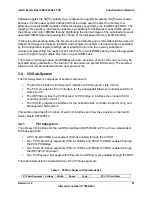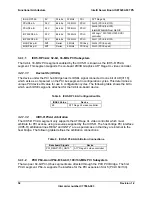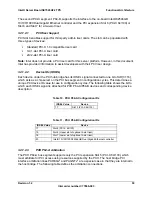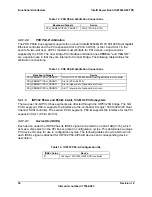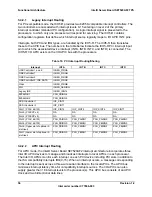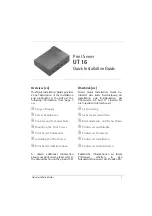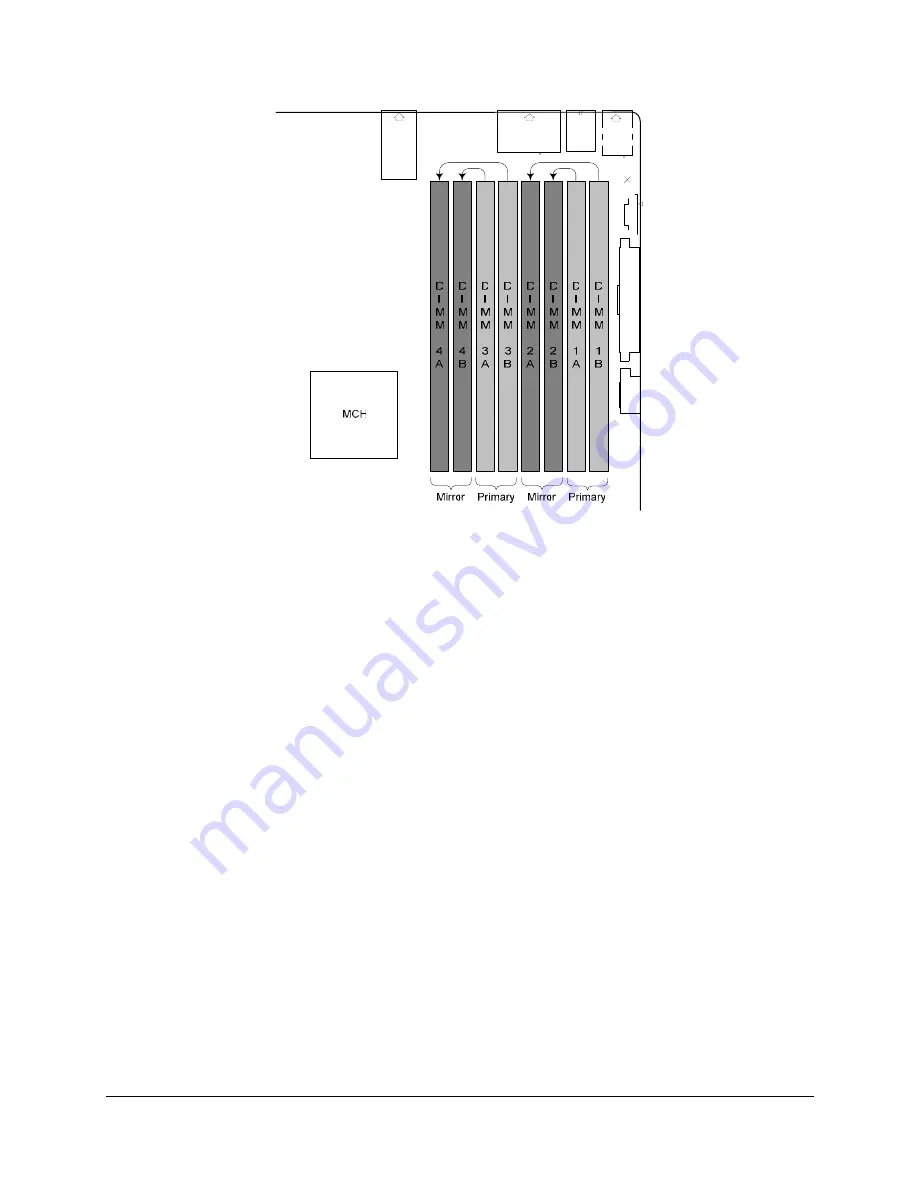
Functional Architecture
Intel® Server Board SE7520AF2 TPS
50
Revision
1.2
Intel order number C77866-003
Figure 9. Eight DIMM Memory Mirror Configuration
The symmetry requirements are a result of the hardware mechanism for maintaining two copies
of all main memory data while ensuring that each channel has a full copy of all data in
preparation for fail-down to single-channel operation. Every write to memory is issued twice,
once to the “primary” location, and again to the “mirror” location. The data interleaved across the
channel pair are swapped for the second write (1A is a copy of 2B, 1B is a copy of 2A etc.). The
resulting memory image has two full copies of all data, and a complete copy is available on
each channel.
Hardware in the MCH tracks which DIMM slots are primaries, and which are mirrors, such that
data may be internally realigned to correctly reassemble cache lines regardless of which copy is
retrieved. There are four distinct cases for retrieval of the “even” and “odd” chunks of a cache-
line of data:
Interleaved dual-channel read to the primary DIMM with “even” data on channel A
Interleaved dual-channel read to the mirror DIMM with “even” data on channel B
Non-interleaved single-channel read pair to channel A with “even” data on the primary
DIMM
Non-interleaved single-channel read pair to channel B with “even” data on the mirror
DIMM
When mirroring is enabled via the MCH configuration, the memory subsystem maintains two
copies of all data, as described above, and retrieves requested data from either the primary
DIMM or the mirrored DIMM, based on the state of system address bit 15 (SA[15]).
















